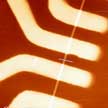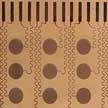Showing Spotlights 769 - 776 of 2879 in category All (newest first):
 Carbon nanomaterials, including graphene-based materials, are widely gaining popularity in practical applications of nanomanufacturing. As a result, it becomes more and more likely that the unwanted introduction of such materials into the environment may occur. In particular, aqueous habitats might be severely affected by any accidental carbon nanomaterials exposure. Researching these potential environmental toxicity effects, scientists have found that kaolin, a cheap and abundant clay, can act as a powerful antidote to remediate the toxic effects of graphene oxide.
Carbon nanomaterials, including graphene-based materials, are widely gaining popularity in practical applications of nanomanufacturing. As a result, it becomes more and more likely that the unwanted introduction of such materials into the environment may occur. In particular, aqueous habitats might be severely affected by any accidental carbon nanomaterials exposure. Researching these potential environmental toxicity effects, scientists have found that kaolin, a cheap and abundant clay, can act as a powerful antidote to remediate the toxic effects of graphene oxide.
Apr 25th, 2018
 Creating smart superhydrophobic (i.e. extremely water-repellent) surfaces is of increasing importance in cutting-edge applications such as self-cleaning, anti freezing, anticorrosion, anti biofouling, water/oil separation, and microfluidics. Researchers now managed to demonstrate a skin-like superhydrophobic surface, which can be switched into different wetting properties by simple body motion. This active surface enables on-demand manipulation of water droplets without energy supply or external appliance.
Creating smart superhydrophobic (i.e. extremely water-repellent) surfaces is of increasing importance in cutting-edge applications such as self-cleaning, anti freezing, anticorrosion, anti biofouling, water/oil separation, and microfluidics. Researchers now managed to demonstrate a skin-like superhydrophobic surface, which can be switched into different wetting properties by simple body motion. This active surface enables on-demand manipulation of water droplets without energy supply or external appliance.
Apr 24th, 2018
 A triboelectric nanogenerator (TENG) utilizes charges arising from friction similar to the static we experience on dry winter days; and by nanostructuring the materials in a TENG device, the produced energy could be amplified by increasing the contact area of the surfaces. In a step toward the commercialization of triboelectric nanogenerator (TENG) devices, researchers have presented a novel approach that uses TENG technology to develop battery-free, self-powered electronic toys.
A triboelectric nanogenerator (TENG) utilizes charges arising from friction similar to the static we experience on dry winter days; and by nanostructuring the materials in a TENG device, the produced energy could be amplified by increasing the contact area of the surfaces. In a step toward the commercialization of triboelectric nanogenerator (TENG) devices, researchers have presented a novel approach that uses TENG technology to develop battery-free, self-powered electronic toys.
Apr 23rd, 2018
 The growing threat of antibiotic-resistant bacterial strains may pose grave risks for society: A post-antibiotic era means, in effect, an end to modern medicine as we know it. New research findings could point the way to new treatments for now-invincible bacterial foes, not by developing a new antibiotic that would kill these bacteria, but by making them weaker so that they get more easily attacked by our immune system. Understanding the physical mechanisms that underlie this persistent stickiness at the molecular level is instrumental to combat these invaders.
The growing threat of antibiotic-resistant bacterial strains may pose grave risks for society: A post-antibiotic era means, in effect, an end to modern medicine as we know it. New research findings could point the way to new treatments for now-invincible bacterial foes, not by developing a new antibiotic that would kill these bacteria, but by making them weaker so that they get more easily attacked by our immune system. Understanding the physical mechanisms that underlie this persistent stickiness at the molecular level is instrumental to combat these invaders.
Apr 20th, 2018
 The advent of graphene resulted in a massive, world-wide, effort directed at investigation of other two-dimensional (2D) layered materials. One-dimensional (1D) bundled materials have received considerably less attention. Similar to the 2D layered materials with covalently bonded layers separated by the van der Waals gaps, the 1D materials consist of covalently bonded one-dimensional wires with van der Waals gaps between the wires. Researchers now have discovered that quasi-1D nanoribbons reveal an exceptionally high current density at the peak of the stressing DC current. This level of the current density exceeds that in any conventional metals like copper by almost two orders of magnitude.
The advent of graphene resulted in a massive, world-wide, effort directed at investigation of other two-dimensional (2D) layered materials. One-dimensional (1D) bundled materials have received considerably less attention. Similar to the 2D layered materials with covalently bonded layers separated by the van der Waals gaps, the 1D materials consist of covalently bonded one-dimensional wires with van der Waals gaps between the wires. Researchers now have discovered that quasi-1D nanoribbons reveal an exceptionally high current density at the peak of the stressing DC current. This level of the current density exceeds that in any conventional metals like copper by almost two orders of magnitude.
Apr 19th, 2018
 Sensory substitution with flexible electronics is one of the intriguing fields of research that takes place in nanotechnology labs around the world. In line with this focus on human senses, in the future artificial retinas integrated with the human body may not only repair damaged vision but also expand it to see a wider range wavelengths (e.g. ultraviolet light). Researchers now have demonstrated a new self-powered brain-linked vision electronic skin (e-skin) for mimicking the human retina. The general idea of our device design of brain-linked vision electronic skin is constructing an integrated flexible system including photodetector array, information analyzer, signal transmitter, and electricity power unit.
Sensory substitution with flexible electronics is one of the intriguing fields of research that takes place in nanotechnology labs around the world. In line with this focus on human senses, in the future artificial retinas integrated with the human body may not only repair damaged vision but also expand it to see a wider range wavelengths (e.g. ultraviolet light). Researchers now have demonstrated a new self-powered brain-linked vision electronic skin (e-skin) for mimicking the human retina. The general idea of our device design of brain-linked vision electronic skin is constructing an integrated flexible system including photodetector array, information analyzer, signal transmitter, and electricity power unit.
Apr 18th, 2018
 As a promising large-scale energy storage technology, redox flow batteries (RFBs) are attracting increasingly more research attention. For RFB separators, the essential requirement is achieving high ionic conductivity with minimal cross-over at low cost. Researchers now have demonstrated a proof-of-concept graphene oxide (GO) membrane as separator for large-scale energy RFBs. Their work shows that the two-dimensional nanochannel structure and low frictional water flow inside micrometer-thick GO laminates make this material an attractive candidate membrane for large-scale energy storage systems.
As a promising large-scale energy storage technology, redox flow batteries (RFBs) are attracting increasingly more research attention. For RFB separators, the essential requirement is achieving high ionic conductivity with minimal cross-over at low cost. Researchers now have demonstrated a proof-of-concept graphene oxide (GO) membrane as separator for large-scale energy RFBs. Their work shows that the two-dimensional nanochannel structure and low frictional water flow inside micrometer-thick GO laminates make this material an attractive candidate membrane for large-scale energy storage systems.
Apr 17th, 2018
 Researchers demonstrate that helical shaped magnetic nanomotors can be maneuvered inside a living cell. This new and versatile technique has the potential ability to position any payload at any desired location inside a living cell itself, which is of great importance in the field of biology and biophysics. The helical shaped nanomotors are made of mainly silica and a thin layer of magnetic material, while their size is at least ten times smaller than the cell which they enter in. A rotating magnetic field is used to drive the motors inside the cytoplasm with precise control.
Researchers demonstrate that helical shaped magnetic nanomotors can be maneuvered inside a living cell. This new and versatile technique has the potential ability to position any payload at any desired location inside a living cell itself, which is of great importance in the field of biology and biophysics. The helical shaped nanomotors are made of mainly silica and a thin layer of magnetic material, while their size is at least ten times smaller than the cell which they enter in. A rotating magnetic field is used to drive the motors inside the cytoplasm with precise control.
Apr 16th, 2018
 Carbon nanomaterials, including graphene-based materials, are widely gaining popularity in practical applications of nanomanufacturing. As a result, it becomes more and more likely that the unwanted introduction of such materials into the environment may occur. In particular, aqueous habitats might be severely affected by any accidental carbon nanomaterials exposure. Researching these potential environmental toxicity effects, scientists have found that kaolin, a cheap and abundant clay, can act as a powerful antidote to remediate the toxic effects of graphene oxide.
Carbon nanomaterials, including graphene-based materials, are widely gaining popularity in practical applications of nanomanufacturing. As a result, it becomes more and more likely that the unwanted introduction of such materials into the environment may occur. In particular, aqueous habitats might be severely affected by any accidental carbon nanomaterials exposure. Researching these potential environmental toxicity effects, scientists have found that kaolin, a cheap and abundant clay, can act as a powerful antidote to remediate the toxic effects of graphene oxide.
 Subscribe to our Nanotechnology Spotlight feed
Subscribe to our Nanotechnology Spotlight feed





